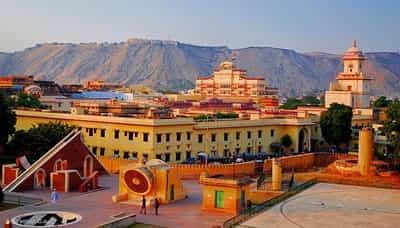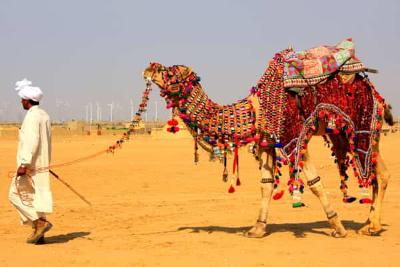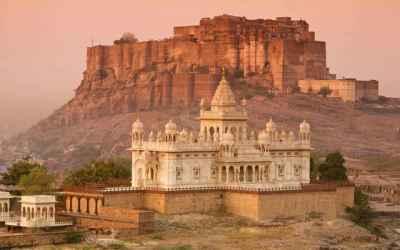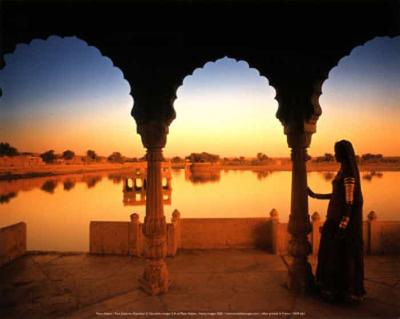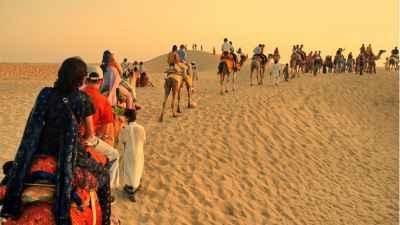Discovering Rajasthan’s Fresco Trail
The Origins of Rajasthani Frescoes
Fresco painting has a long history in India, with evidence of its existence dating back to ancient times. However, it was during the 16th to 19th centuries, under the patronage of Rajput rulers, that fresco painting truly flourished in Rajasthan. The Rajputs, known for their love for art and architecture, commissioned artists to adorn the walls and ceilings of their palaces, forts, and havelis (traditional mansions) with these vibrant and detailed frescoes.
Rajasthani frescoes are characterized by their bright colors, intricate detailing, and themes inspired by mythology, religion, nature, and daily life. These artworks not only served as a decoration but also conveyed stories, beliefs, and the lifestyle of the people of Rajasthan.
Exploring the Fresco Trail
The Fresco Trail in Rajasthan covers several cities and towns that are known for their spectacular fresco art. Here are some of the must-visit destinations along this trail:
1. Shekhawati
Located in the northern part of Rajasthan, Shekhawati is often referred to as an "open-air art gallery" due to its magnificent frescoes. The region is dotted with numerous havelis and mansions adorned with these intricate paintings. The towns of Mandawa, Nawalgarh, and Dundlod in Shekhawati are particularly famous for their well-preserved frescoes. Exploring the narrow lanes and hidden courtyards of these towns will transport you to a bygone era of opulence and artistic grandeur.
2. Jaipur
The capital city of Rajasthan, Jaipur, is famous for its majestic palaces and forts. However, it is also home to some remarkable frescoes. The City Palace and Hawa Mahal are prime examples of the fusion of Mughal and Rajput architectural styles, adorned with intricate frescoes. The Albert Hall Museum in Jaipur also houses a vast collection of Rajasthani art, including frescoes.
3. Jodhpur
Known as the "Blue City," Jodhpur is not only famous for its blue-painted houses but also for the beautiful frescoes found within its palaces and havelis. The Mehrangarh Fort, one of the largest forts in India, features stunning frescoes depicting historical events and the life of the Rajput rulers. The Umaid Bhawan Palace, now a luxury hotel, is another example of magnificent fresco art in Jodhpur.
4. Udaipur
Udaipur, often called the "Venice of the East," is renowned for its picturesque lakes and palaces. The City Palace in Udaipur boasts impressive frescoes that adorn its walls and courtyards. The Jag Mandir Palace, located on an island in Lake Pichola, is yet another architectural marvel adorned with exquisite frescoes.
The Preservation Efforts
While these frescoes have stood the test of time, they have also faced challenges due to natural decay, weathering, and human negligence. Recognizing the importance of preserving this invaluable heritage, various government and non-government organizations in Rajasthan have taken initiatives to restore and conserve the frescoes. Efforts have been made to raise awareness, provide training to artisans, and develop sustainable tourism around these artworks.
Visitors are encouraged to support the preservation efforts by respecting the sites, following the guidelines, and appreciating the art with care. Remember, these frescoes are not just paintings but a representation of centuries-old craftsmanship and cultural heritage.
Conclusion
Embarking on Rajasthan’s Fresco Trail is like stepping into a kaleidoscope of colors, stories, and history. The intricate frescoes found in the palaces, forts, and havelis of Rajasthan are a testament to the artistic brilliance of the region. Exploring destinations like Shekhawati, Jaipur, Jodhpur, and Udaipur will transport you back in time and give you a glimpse into the lives of the Rajput rulers.
Whether you are an art lover, history enthusiast, or simply seeking an enriching travel experience, the Fresco Trail in Rajasthan is a must-visit. So pack your bags, immerse yourself in the beauty of these frescoes, and create memories that will last a lifetime.
Disclaimer : The information provided in this blog is for general informational purposes only. While we strive to keep the content accurate and updated, TravelSetu assumes no liability for errors or omissions. If you believe any part of this blog infringes your rights or causes concern, please notify us immediately at info[at]travelsetu[dot]com so that appropriate action can be taken.
